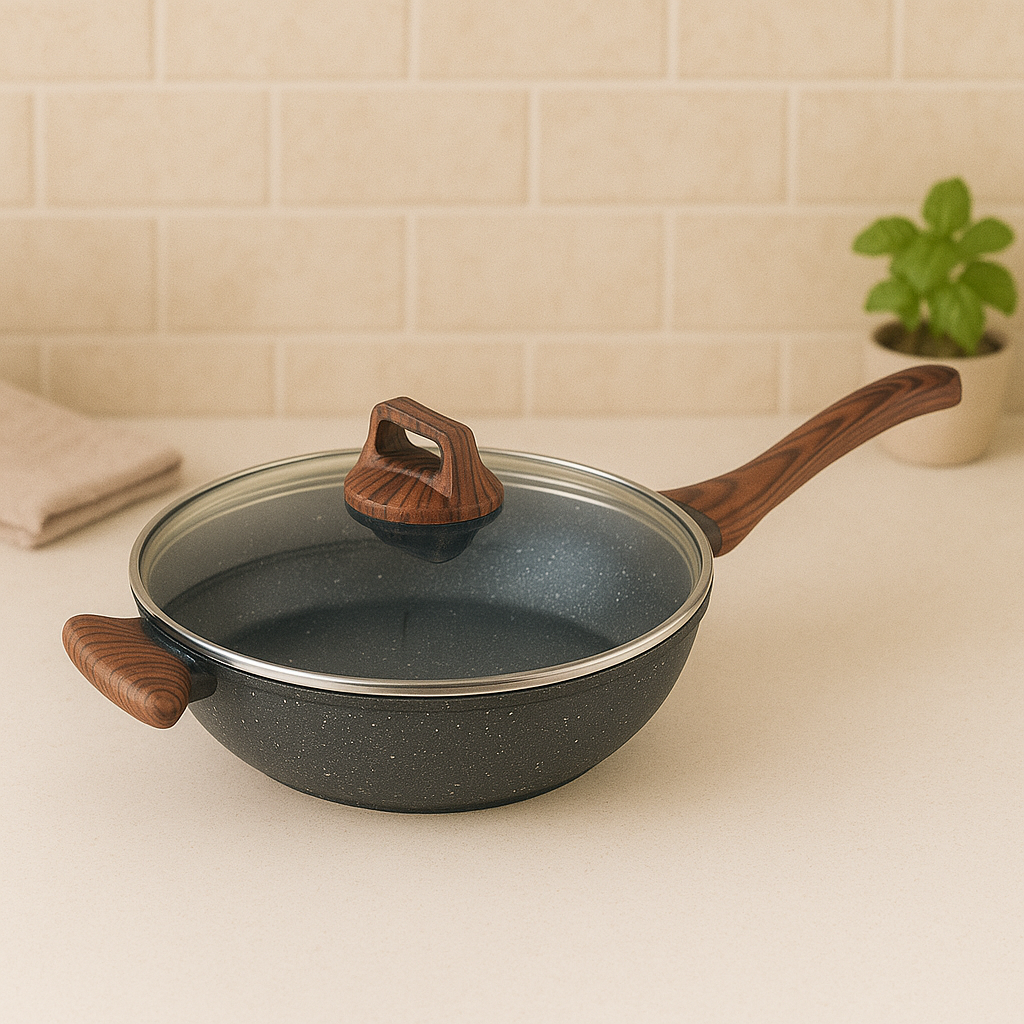Is Nontoxic Nonstick Cookware Truly Free of PFAS and PFOA?
May 15, 2025
The growing health consciousness among consumers has led to increased demand for nontoxic nonstick cookware that promises safer cooking without harmful chemicals. But how can we be certain these products are truly free from PFAS (per- and polyfluoroalkyl substances) and PFOA (perfluorooctanoic acid), the potentially hazardous compounds traditionally used in nonstick coatings?
Understanding the PFAS and PFOA Concern
Traditional nonstick coatings became controversial when studies revealed that PFOA, a processing agent used in manufacturing, could persist in the environment and potentially affect human health. While major manufacturers phased out PFOA by 2015, many consumers remain wary about similar compounds in their cookware. This concern has driven innovation in nontoxic nonstick cookware alternatives that eliminate these chemicals entirely.

The New Generation of Safer Nonstick Options
Modern non stick non scratch cookware comes in several varieties that claim to avoid these problematic substances:
1. Ceramic nonstick coatings - Made from sand-derived silicon without fluoropolymers
2. Diamond-infused coatings - Use carbon particles for durability without PFAS
3. Enameled cast iron - Provides natural nonstick properties through seasoning
4. Hard anodized nonstick cookware - Features an electrochemically treated aluminum base with safer coatings
These alternatives to traditional nonstick surfaces have flooded the market, with many brands prominently advertising their PFOA-free and PFAS-free status. However, consumers should remain vigilant as regulations vary by country and enforcement can be inconsistent.
Hard Anodized: A Special Case
Hard anodized nonstick cookware deserves special attention in this discussion. The anodization process creates a thick, hardened aluminum surface that's more durable than regular aluminum. When combined with modern nonstick coatings, it offers several advantages:
- outstanding scratch resistance compared to standard non stick non scratch cookware
- Better heat distribution than many ceramic alternatives
- Longer lifespan than conventional nonstick pans
However, not all hard anodized nonstick cookware is created equal. Some may still use PTFE (polytetrafluoroethylene) coatings, which while PFOA-free, may raise other concerns at very high temperatures.
How to Verify Safety Claims
When shopping for nontoxic nonstick cookware, consider these verification steps:
1. Check for certifications - Look for independent testing seals like GreenPan's Thermolon certification
2. Research the brand - Established manufacturers typically provide more transparency
3. Understand the coating technology - Know the difference between ceramic, diamond-infused, and other options
4. Read care instructions - Truly safe non stick non scratch cookware shouldn't require special ventilation during use
Performance Considerations
Beyond safety, practical cooks want to know how these alternatives perform:
- Heat tolerance - Most nontoxic nonstick cookware has lower improve temperatures than traditional nonstick
- Durability - Hard anodized nonstick cookware typically outlasts ceramic options
- Maintenance - Many new coatings forbid metal utensils, despite being marketed as scratch-resistant
- Cooking results - Some chefs report slight differences in food release compared to traditional nonstick
Making an Informed Choice
The market for non stick non scratch cookware has evolved significantly in recent years. While truly PFAS-free options exist, consumers should:
- Be skeptical of vague eco-friendly claims without specifics
- Consider that hard anodized nonstick cookware often represents a good balance of safety and durability
- Remember that no nonstick surface lasts forever, even expensive nontoxic nonstick cookware
The safest approach combines careful product selection with proper usage - avoiding overheating, using appropriate utensils, and following manufacturer guidelines. With these precautions, health-conscious cooks can enjoy the convenience of nonstick surfaces without the worry of harmful chemical exposure.
 English
English русский
русский Français
Français Español
Español Português
Português عربى
عربى














